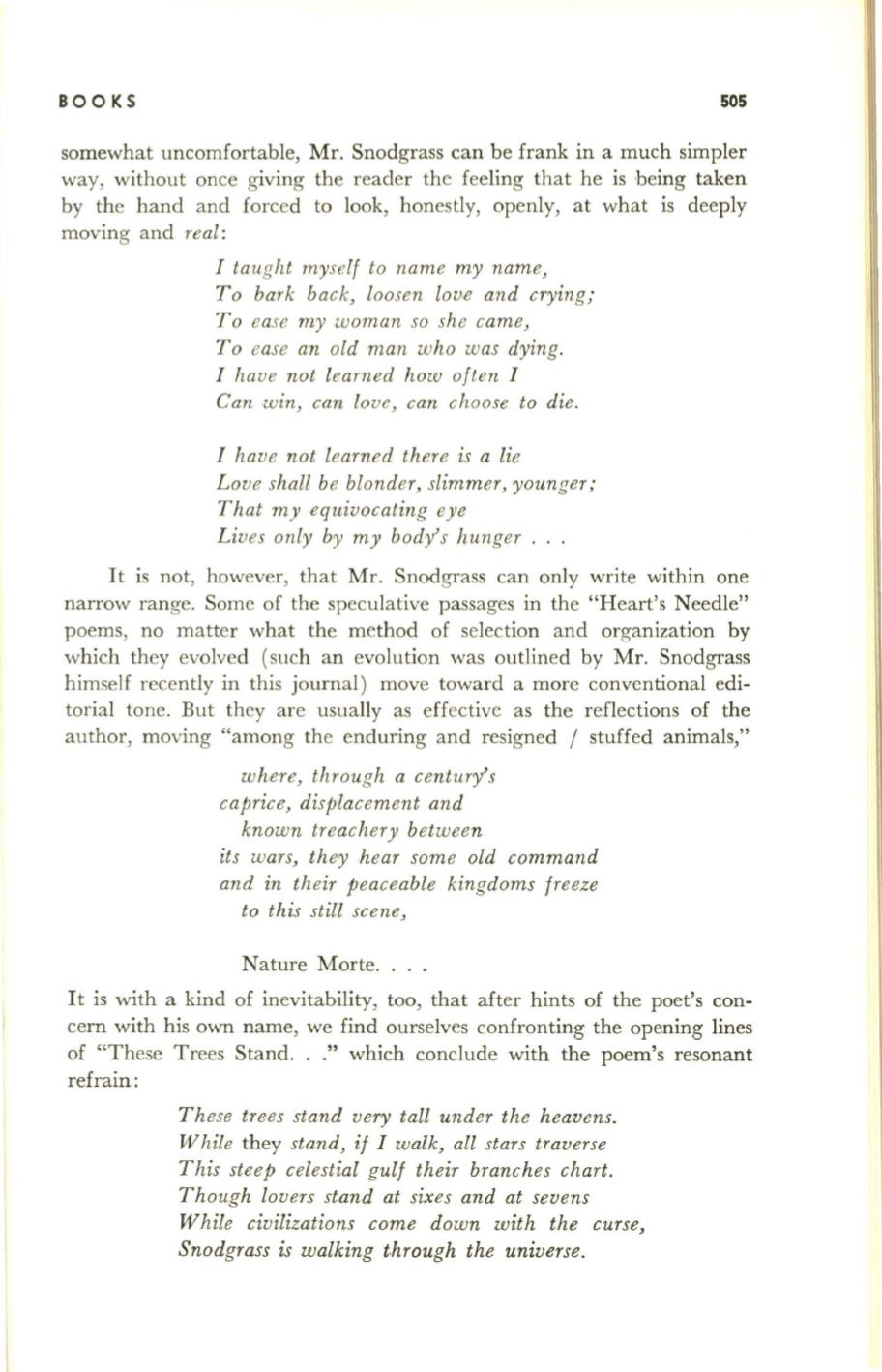
BOOKS
505
somewhat uncomfortable, Mr. Snodgrass can be frank in a much simpler
way, without once giving the reader the feeling that he is being taken
by the hand and forced to look, honestly, openly, at what is deeply
moving and
real:
I taught myself to name my name,
To bark back, loosen lov,e and crying;
To ease my woman so she came,
To ease an old man who was dying.
I have not learned how often I
Can win, can love, can choose to die.
I have not learned there
is
a lie
Love shall be blonder, slimmer, younger;
That my ,equivocating eye
Lives only by my body's hunger .
..
It is not, however, that Mr. Snodgrass can only write within one
narrow range. Some of the speculative passages in the "Heart's Needle"
poems, no matter what the method of selection and organization by
which they evolved (such an evolution was outlined by Mr. Snodgrass
himself recently in this journal) move toward a more conventional edi–
torial tone. But they are usually as effective as the reflections of the
author, moving "among the enduring and resigned / stuffed animals,"
where, through a century's
caprice, displacement and
known treachery between
its wars, they hear some old command
and in their peaceable kingdoms freeze
to this still scene,
Nature Morte...
It is with a kind of inevitability, too, that after hints of the poet's con–
cern with his own name, we find ourselves confronting the opening lines
of "These Trees Stand..." which conclude with the poem's resonant
refrain:
These trees stand very tall under the heavens.
While
they
stand, if I walk, all stars traverse
This steep celestial gulf their branches chart.
Though lovers stand at sixes and at sevens
While civilizations come down with the curse,
Snodgrass
is
walking through the universe.


